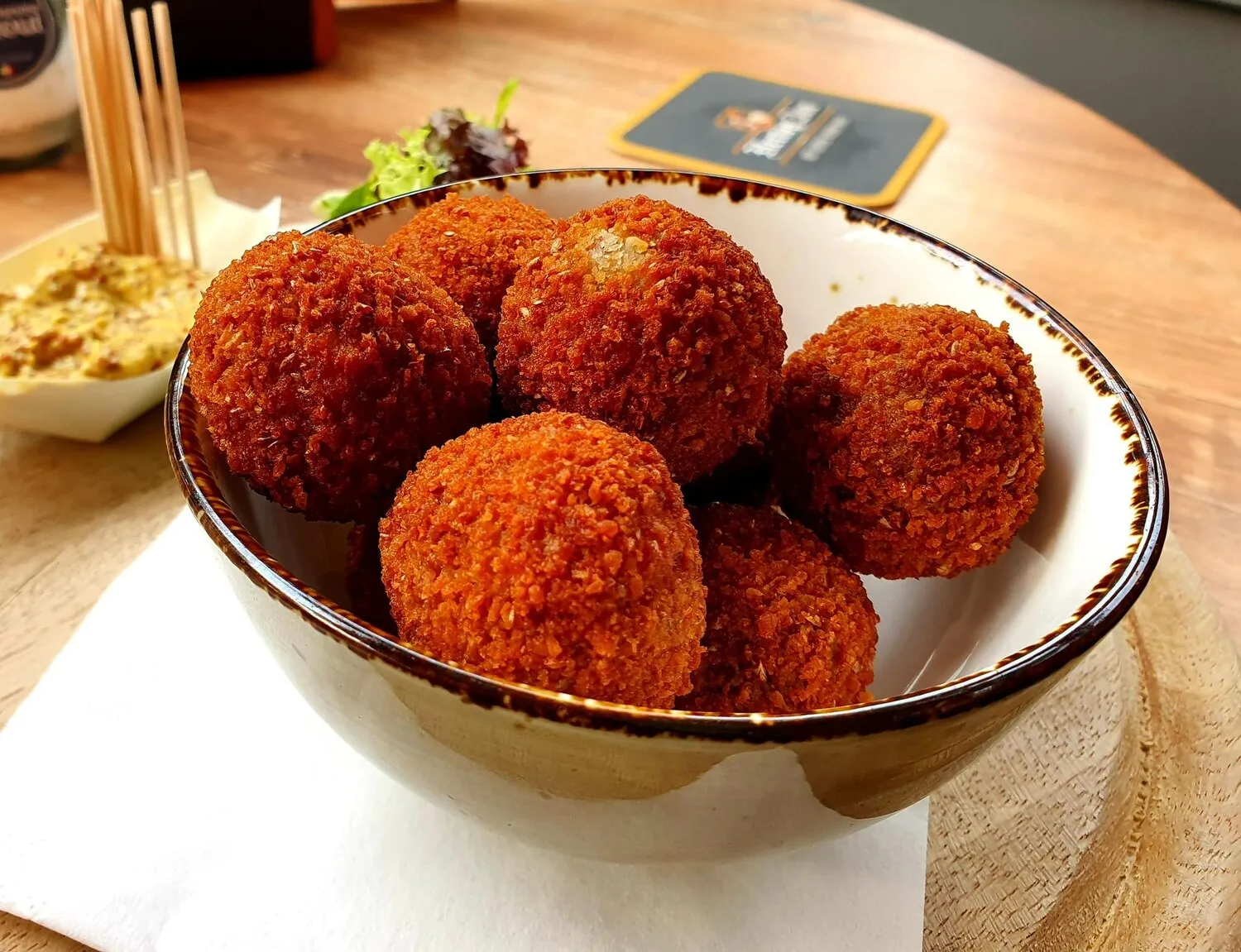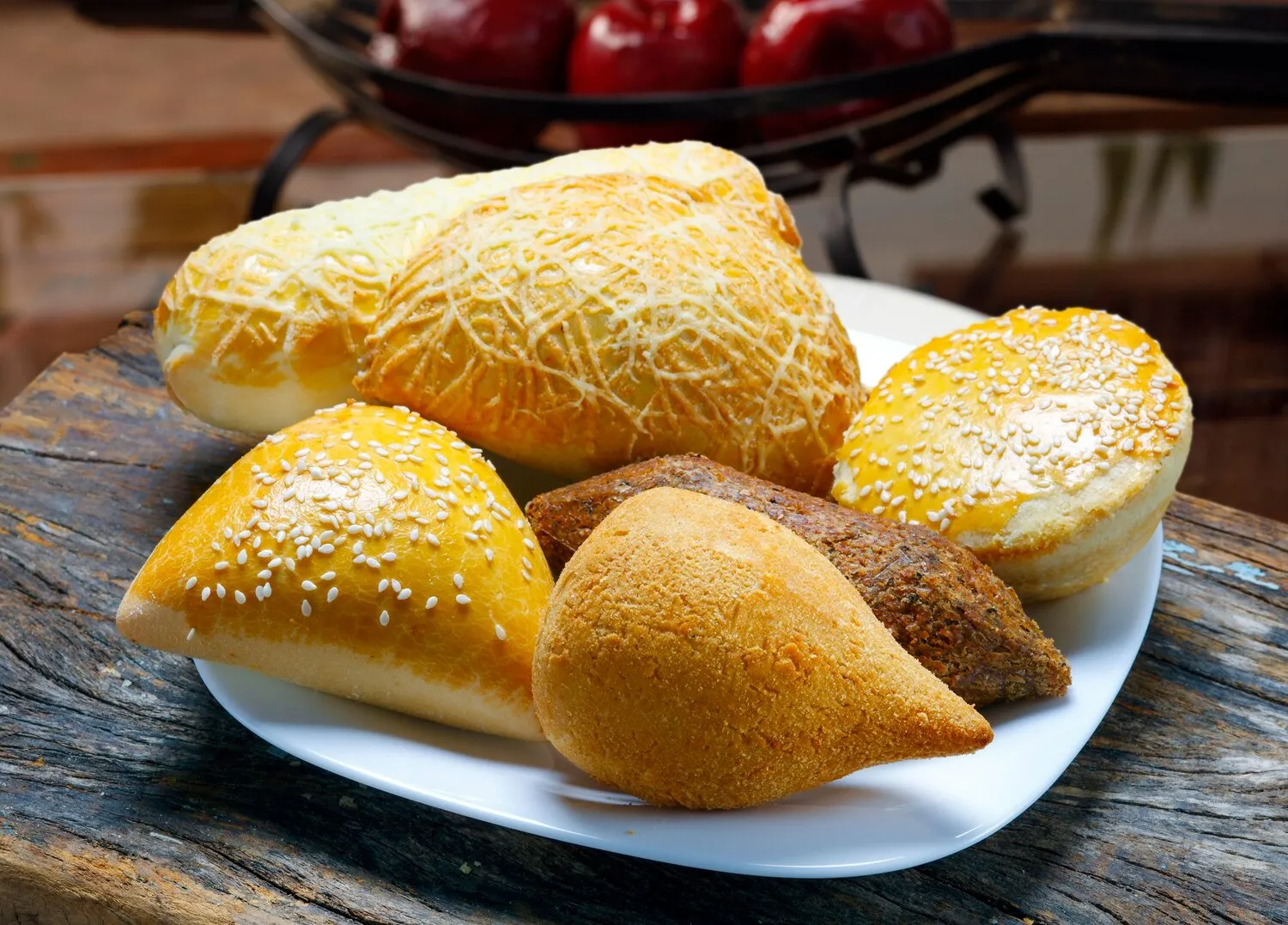
Tostadas
Toasts served at the cafe
Nutrition Facts
* The % Daily Value (DV) tells you how much a nutrient in a serving of food contributes to a daily diet. 2,000 calories a day is used for general nutrition advice.
The tostada, meaning 'toasted' in Spanish, has roots in pre-Columbian Mexico. The preparation of corn tortillas, and their potential to become stale and hard, likely led to the resourceful practice of toasting or frying them to make them edible again. This simple act of preservation and transformation eventually evolved into the layered, flavorful dish we know today.
Tostadas are deeply ingrained in Mexican cuisine and culture, representing resourcefulness, adaptability, and a celebration of simple ingredients. They are a popular street food, a common family meal, and a customizable dish that reflects regional variations and personal preferences.
Street Food Staple
Tostadas are readily available from street vendors throughout Mexico, offering a quick, affordable, and satisfying meal.
Family Meal
Making tostadas at home is a fun and interactive experience, allowing everyone to customize their own toppings and create unique flavor combinations.
Regional Variations
Different regions of Mexico boast their own unique tostada toppings, reflecting local ingredients and culinary traditions. Seafood tostadas are common along the coasts, while inland regions may feature more meat-based toppings.
Toppings versatility
Tostadas are adaptable and allow the use of leftover meat, beans and vegetables to create a quick and delicious meal.
Tostadas offer a delightful explosion of textures and flavors. The crispy tortilla base provides a counterpoint to the soft toppings, with a balance of savory, spicy, and fresh elements.
The base flavor comes from the toasted or fried tortilla – typically corn, though flour tortillas are also used. Savory elements often include refried beans, shredded chicken or beef, carnitas, or seafood. Spicy notes are introduced through salsa, pickled jalapeños, or chili powder. Freshness is added with shredded lettuce or cabbage, diced tomatoes, onions, cilantro, avocado or guacamole, and a drizzle of crema or queso fresco. The specific combination of ingredients greatly influences the overall flavor profile, ranging from mild and comforting to bold and fiery.
Preventing Soggy Tostadas
To prevent the tortilla from becoming soggy, spread a thin layer of refried beans or a similar barrier between the tortilla and wetter toppings like salsa or guacamole.
Crispy Tortilla Perfection
For the crispiest tostada, fry the tortilla in hot oil until golden brown and bubbly. Alternatively, bake the tortilla in the oven at a high temperature until crispy.
Layering Matters
Consider the layering of ingredients to maximize flavor and texture. Start with the beans, then add the protein, salsa, vegetables, and finally, the toppings like crema and cheese.
Avocado and Tomato Tostada Variation
A simple, fresh variation involves a crispy tortilla topped with mashed avocado, sliced tomatoes, a sprinkle of salt and pepper, and a squeeze of lime juice. Other additions might include red onion, cilantro, and crumbled queso fresco.
Explore additional Snacks dishes and restaurants
Explore SnacksDiscover top dining spots and culinary experiences in Logroño.
Explore LogroñoLearn more about the food culture, restaurant scene, and culinary heritage of Spain.
Explore Spain

